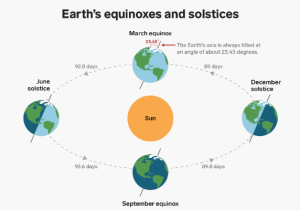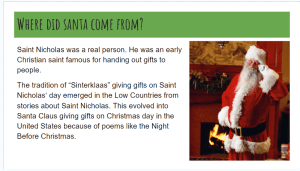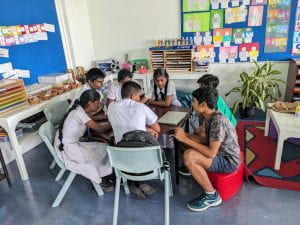Last year for Theory of Knowledge (TOK) we had to make an “Exhibition.” For the purposes of the IB this is basically just an essay about three objects and their context which all play into a single theme to answer a specific prompt you chose, but in theory it is an exhibition.
In order to add verisimilitude to the idea that this is an exhibition not just an essay with a weird structure, the teachers decided that now, a year later, we should present our exhibitions to the current class of DP 1’s.
This meant that I looked at my old document again, grieved at how terrible I now realize it was, and then boiled it down into something I could present to an audience.
My three objects were in order: a quote from the Director’s commentary of the movie Starship Troopers, an article by Francis Fukuyama in The Atlantic, and a proposed senate bill that would have made Ethanol fuel more accessible. These were in response to the prompt “What counts as good evidence for a claim.”
Whenever you see something that you think is fascist, you should know that the makers coincide with your opinion that it is not good, that is not a good statement, that is not good politics and if you see a black uniform you should know bad, bad, bad… You should not read it differently than that. We all agree with that. It is bad. -Paul Verhoeven
The quote from Paul Verhoeven, director of Starship troopers in that movie’s directors commentary is him outright saying that the movie opposes fascism. By any reasonable definition, that is good evidence for the claim that the movie is anti-fascist. However, there is still a debate about it. I referenced a specific youtube video attempting to dispute that claim. I tied this back to the prompt by saying that even though there is good evidence for one side, the debate continues- so is it actually good evidence?

My second object was an article from The Atlantic by Francis Fukuyama. Fukuyama famously wrote the book “The End of History and the Last Man” which essentially argued the the American Political and Economic System circa the 1990’s was the best possible system for the world. The main evidence for this was the then- recent collapse of the Soviet Union and it’s rival system. This book was extensively mocked and criticized in its own time, with an additional wave of criticism coming from supporters of “illiberal democracies” in the 2010’s. In the article, Fukuyama claims that recent events, mostly Russia’s embarrassing failure to invade Ukraine, show that he was right all along and that illiberalism is a worse system.
The points I drew from this piece of evidence is that this is an academic debate where all of the evidence is conclusions drawn from history, which is incredibly subjective and complicated. There is no concrete evidence, yet the debate continues. To them, it is good evidence.

The CFRCA was a bill that would have expanded subsidies for fuel with ethanol to the entire year in the US. Consequently, this bill would have increased consumption of Ethanol massively.
The Ethanol debate in the US is a contentious one that is theoretically about environmental impact. Basically, ethanol mixed fuel emits less carbon when burned but arguably the carbon emissions involved in produce ethanol are high enough that on net it isn’t actually cleaner. A solid argument can be made both that Ethanol is better for the environment and that it does nothing, with both sides being able to point to scientific evidence agreeing with them.
However, the senate support for the CFRCA came entirely from the midwest, which notably produces the most grain. In other words, the CFRCA was a bill completely unconcerned with the climate- it was a bill that would have sent money to midwestern states by increasing demand for their main product.
There is good evidence in this debate, but it is unrelated to the actual terms of contention. Thus, because it is not relevant to what the debate is actually about, it is not good evidence.

The ultimate point I tried to come to with my exhibition was this: Evidence is as good as it is useful and relevant to the actual motivation behind the debate. If there is conclusive, inconclusive or entirely absent evidence, people will still debate if they have a different reason to do so. I believe that all of my points add up to that conclusion.
I think I actually did pretty well, albeit not perfectly. I boiled down all of my points into a single slideshow I made on Canva, which I printed out and pinned up to the board. When doing this I noticed I had identified myself as a DP 1 and had to embarrassingly cross it out in pen and write “2”.
TOK Exhibition Presentation
My font size was slightly too small compared to the white space- an issue that came from designing it online and not in person. Other than that though, I feel like it worked pretty well.
I gave my presentation to the handful of DP 1’s who wandered over to my table (plus a couple teachers who I think understood it more) and my throat actually got pretty dry from all the talking, and I had to run to refill my water bottle.
It went pretty well, although I now think that I could have written the exhibition I sent to the IB itself significantly better, which is disappointing but that’s how things are. I also hope that I managed to show the DP 1’s who showed up all of the ways your TOK Exhibition can go- none of my objects where concrete objects, they were all pieces of a broader debate. I hope that helped someone.


 Cultural Exchange has continued. We have now done two additional sessions, and they have been a mixed bag from my perspective.
Cultural Exchange has continued. We have now done two additional sessions, and they have been a mixed bag from my perspective.





